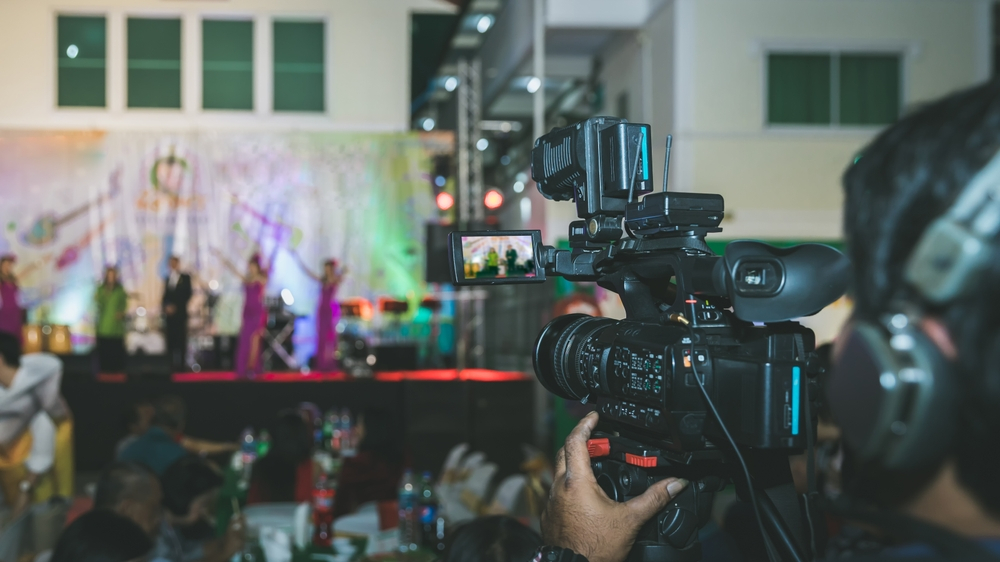Cinematography, the art of capturing moving images on film or digital media, has undergone a remarkable evolution since its inception. From the early days of black-and-white imagery to the advent of vibrant color, this progression has not only altered the visual aspect of filmmaking but has also transformed the way stories are told and emotions are conveyed. In this article, we’ll take a journey through time, exploring the fascinating evolution of cinematography from its monochromatic beginnings to the technicolor world we know today.
The Birth of Cinematography: Black and White Era
The journey of cinematography began in the late 19th century with the invention of the motion picture camera. Early cinematography was characterized by black-and-white imagery, capturing scenes in varying shades of gray. Despite the limitations of monochrome, filmmakers of that era relied on creative lighting, composition, and shadows to convey depth and emotion.
The black and white era was marked by iconic silent films like “Metropolis” (1927) and “The Cabinet of Dr. Caligari” (1920), where visual storytelling took center stage. Filmmakers honed their skills in framing and lighting to evoke strong emotional responses from the audience, illustrating that color was not a prerequisite for powerful storytelling.
The Advent of Color: A Game Changer
The breakthrough in cinematography came with the introduction of color. Early colorization methods involved hand-painting individual frames or tinting the film, providing a semblance of color. However, these methods were labor-intensive and did not produce a realistic color representation.
The significant leap forward occurred with the introduction of Technicolor, a groundbreaking color process that enabled filmmakers to capture scenes in vibrant, natural hues. “The Wizard of Oz” (1939) and “Gone with the Wind” (1939) are examples of early films that showcased the potential of color in storytelling. Color brought a new dimension to cinematography, allowing for richer, more visually immersive experiences.
The Golden Age of Technicolor: A Cinematic Renaissance
The Golden Age of Technicolor, spanning from the 1930s to the 1950s, saw an explosion of color in cinema. The process became more refined, and filmmakers embraced color as an integral tool for enhancing storytelling and creating mood. The lush, vivid visuals of films like “Singin’ in the Rain” (1952) and “The Red Shoes” (1948) captivated audiences and set new standards for cinematographic excellence.
Modern Cinematography: Color as a Narrative Device
As the role of a cinematographer continued to evolve, color became more than just eye candy. Filmmakers began using color strategically to convey emotions, represent themes, and guide the narrative. Directors like Stanley Kubrick in “2001: A Space Odyssey” (1968) and Alfred Hitchcock in “Vertigo” (1958) demonstrated how color could be a powerful storytelling tool, influencing the audience’s perception and emotional engagement.
Contemporary Cinematography: A Blend of Tradition and Innovation
In today’s cinema, cinematography has reached unprecedented heights. Technological advancements have provided filmmakers with a vast array of tools and techniques to manipulate color and light. Digital cinematography, in particular, offers unparalleled flexibility and precision in achieving the desired visual aesthetic.
Contemporary filmmakers, such as Christopher Nolan in “Inception” (2010) and Wes Anderson in “The Grand Budapest Hotel” (2014), use color grading and visual effects to create distinct visual universes that enhance the narrative and immerse the audience in the story.
The Digital Revolution: A New Horizon in Color Precision
In recent decades, the digital revolution has redefined the landscape of cinematography. The advent of digital cameras and sophisticated post-production techniques has given filmmakers unprecedented control over color and visual aesthetics. Digital cinematography allows for precise color grading, enabling cinematographers to fine-tune every frame to match their artistic vision accurately.
In addition to traditional color grading, High Dynamic Range (HDR) imaging has emerged as a significant advancement. HDR provides a more extensive range of colors and tones, resulting in more lifelike and visually stunning images. Films like “Blade Runner 2049” (2017) and “Mad Max: Fury Road” (2015) demonstrate the immersive experience that HDR technology can create, elevating storytelling to new heights.
The Art of Color Grading: Crafting Visual Narratives
Color grading, once confined to film laboratories, is now a digital art form that allows freelance cinematographers and directors to craft unique visual narratives. Moreover, this post-production process involves adjusting colors, tones, and contrasts to achieve a specific mood or atmosphere. Additionally, whether it’s the warm, nostalgic hues of “La La Land” (2016) or the cold, desaturated tones of “The Matrix” (1999), color grading plays a pivotal role in conveying the story’s essence. Furthermore, it’s a powerful tool that can evoke emotions and enhance storytelling. In addition, modern technology has also made this process more accessible and customizable, enabling filmmakers to experiment with a wide spectrum of artistic choices. In contrast, the traditional film lab approach limited the range of adjustments and was less flexible.
Cinematographers work closely with colorists, skilled professionals specializing in color grading, to achieve the desired look for a film. Through meticulous adjustments and collaboration, they ensure that color aligns with the story’s emotions, effectively enhancing the narrative impact on the audience.
Pushing Boundaries: Experimental Uses of Color
In the realm of experimental and avant-garde cinema, filmmakers continue to push the boundaries of color usage, challenging conventional norms. Movies like “The Fall” (2006) and “Hero” (2002) showcase innovative approaches to color, where each scene is drenched in a distinct palette, creating a surreal, dreamlike quality. These films illustrate how unconventional color choices can contribute to a film’s narrative and visual appeal.
Beyond Realism: Symbolism and Color Psychology
Cinematography often goes beyond realistic representation, delving into symbolism and color psychology. Colors are chosen not only for their aesthetic appeal but also for the emotions and symbols they evoke. For instance, red might symbolize passion or danger, while blue can signify calm or melancholy. Understanding these associations allows filmmakers to use color as a subtle yet powerful tool to reinforce the underlying themes and messages of their stories.
Conclusion
The evolution of cinematography from black and white to color represents not only a technical progression but a creative revolution. The transition from monochrome to color has forever changed how stories are told on the big screen. Color has become an integral part of filmmaking, allowing directors and cinematographers to breathe life into their visions, evoke emotions, and transport audiences to new and captivating worlds.
As we look to the future, the evolution of cinematography shows no signs of slowing down. With advancements in technology and the constant push for creativity, who knows what the next era of cinematography will bring? One thing is certain: the journey from black and white to color is a testament to the ever-changing, awe-inspiring nature of the cinematic arts.




